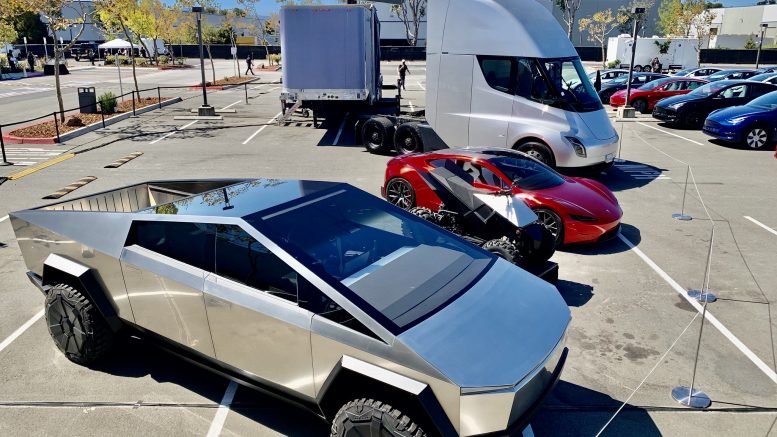Tesla recharges the global battery industry but simplistic presentation causes chaos
Battery-metal explorers and producers ought to coin a new (transitive) verb; “to Musk” is to confuse a science that is already complicated. Lithium developers, in particular, have been ‘musked’ since Tesla’s Battery Day on Sept. 22.
As already reported in The Northern Miner, there has been an incredibly diverse response to Elon Musk’s plans for the future.
Ironically, because of Tesla’s disappointing timelines and lack of detail, the electronic-car manufacturer was one of the biggest losers, with its value down on the day by over US$60 billion — albeit barely 15% of the company’s market capitalization, and the shares have subsequently recovered half of their losses.
The biggest winner was a small, Perth-based, developer of a spodumene deposit in North Carolina, which is the target of a long-term sales agreement with Tesla. The share price of Piedmont Lithium Ltd. more than tripled on the Australian Securities Exchange in September (worryingly, the company’s equity had already risen by 60% ahead of trading being suspended prior to confirmation of the 10-year deal with Tesla).
The Tesla-Piedmont agreement highlights the importance of eliminating cobalt from batteries in favour of metals whose supply is more secure, and a move towards spodumene as feedstock for the lithium hydroxide required in high-nickel batteries.
Thereafter, the views of analysts diverge. London-based Benchmark Mineral Intelligence said the news should be positive for Australian spodumene producers as Tesla will likely need additional tonnages before 2022. The Verge technology-news website applauded Tesla’s plans to produce its own batteries, while Popular Mechanics magazine said Musk “is ready to recharge the battery industry” by taking on a more significant role in sustainable energy generation and storage.
Morgan Stanley saw Elon Musk’s presentation as a “call to arms” for governments, suppliers and investors to “take it up a notch” by significantly accelerating policies and investment. The bank said Tesla has its sights set on reducing its dependency on outside battery-metal supply chains (by investing in mines and processing). Controversially, Morgan Stanley argued, “the new technologies can reduce lithium usage and production costs,” and that this could negatively impact the lithium price.
The managing director at Battery Metals Review (BMR), Matt Fernley, described Morgan Stanley’s conclusions as “one-sided”, “ignorant of relevant data” and “third-rate”. Amongst other criticisms, he stressed the implied overall upside for lithium demand, and rubbished the view that recycling would replace mining. Fernley also noted that spodumene is a lithium mineral contained in pegmatite (hard rock) deposits, not lithium-clay deposits. Moreover, the latter also has high processing costs compared with lithium brine or hard-rock projects.
Battery-metal markets seem to have sided with the view of Battery Metals Review, rather than Morgan Stanley, which is good news for lithium developers everywhere, and it might lead to mining once more in Cornwall.
Cornish Lithium, which is seeking to develop the region’s lithium-rich brines, announced on Sept. 17 that it had found “globally significant” lithium reserves in hot springs within Cornwall’s historic mining area. The exploration company said that initial test results “suggest geothermal waters in south-west England contain some of the world’s highest grades of lithium, and best overall chemical qualities”.
Located at the southwest tip of England, mining began in Cornwall during the early Bronze Age (circa 2200 B.C.E.) and ended with closure in 1998 of the South Crofty tin mine (where production is documented back to 1592). The region’s tin and copper mining industries had started to decline in the 19th century, and it is estimated that most of the 250,000 Cornish who emigrated to the New World between 1861 and 1901 were miners. Indeed it used to be said that “a mine is a hole anywhere in the world with at least one Cornishman at the bottom of it.”
Fingers crossed for the reemergence of one of Europe’s historic mining regions but, meanwhile, do not hold your breath for that cheap Tesla.
— Dr. Chris Hinde is a mining engineer and the director of Pick and Pen Ltd., a U.K.-based consulting firm he set up in 2018 specializing in mining industry trends. He previously worked for S&P Global Market Intelligence’s Metals and Mining division.


Be the first to comment on "Commentary: Lithium industry has been ‘musked’ by Battery Day"